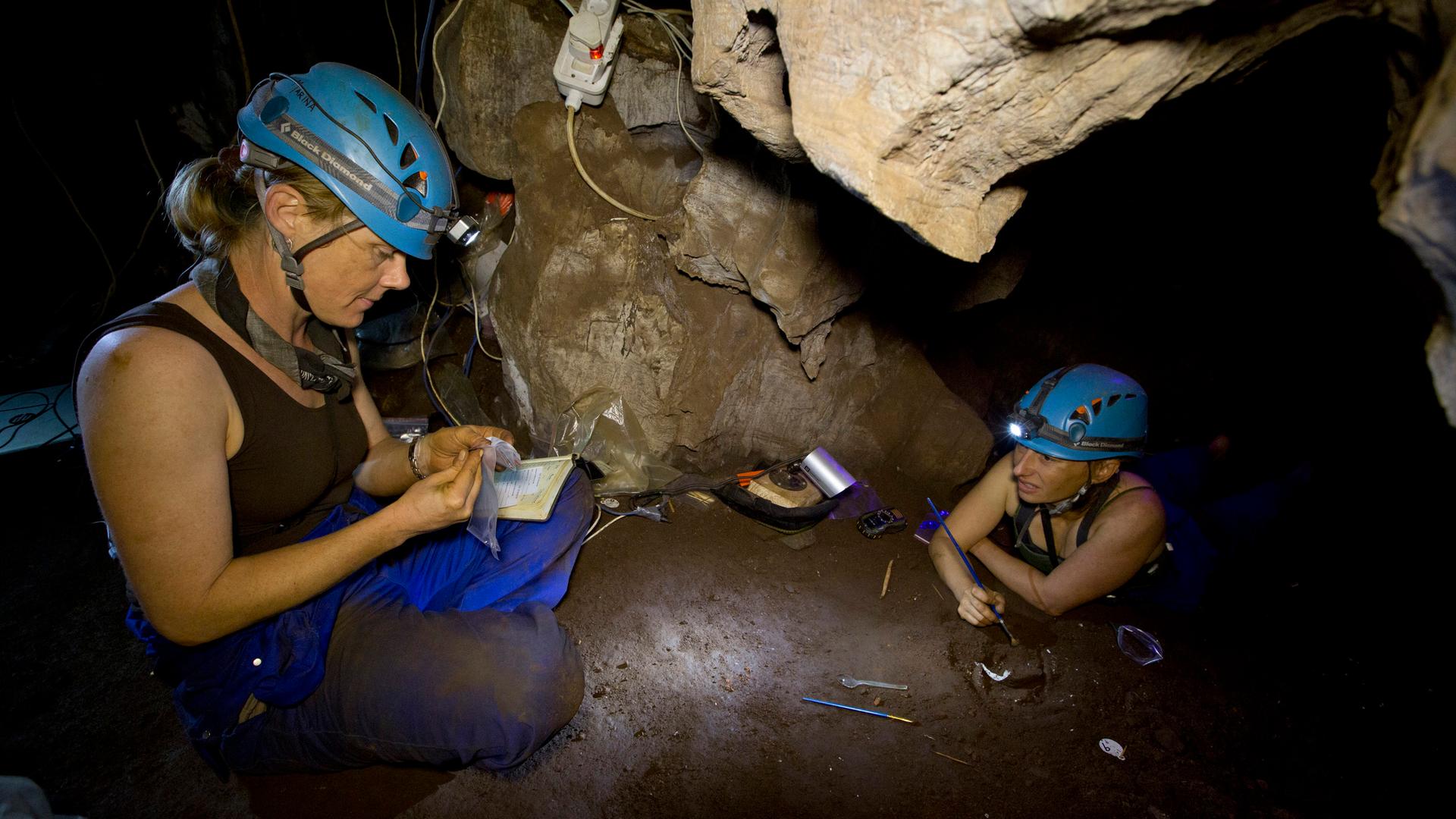“Underground astronauts” Marina Elliott and Becca Peixotto work inside the cave where fossils of H. naledi, a new species of human relative, were discovered. The find was announced by the University of the Witwatersrand, the National Geographic Society and the South African National Research Foundation and published in the journal eLife.
Who is behind the discovery of a new human ancestor?
People like Becca Peixotto, whose slender 4-foot-10 frame enabled her to squeeze through a tight South African cave to find and carefully pack and carry back bones to archaeologists on the surface.
"There are things that I can do that other people can't," Peixotto, an American University doctoral student, said in an interview Thursday morning. "I might not be able to reach the things on the top shelf at the grocery store but I can sure go in a cave and find some fossils for you.''
Peixotto was one of six skinny researchers — dubbed ''underground astronauts" — chosen to slip into a crack in a limestone wall deep in the South African cave. The discovery, announced Thursday, came from deep inside that chamber, after shimmying through that crack and squiggling across a floor in a maneuver they called the "Superman crawl'' and climbing near a perilous dropoff. In blue jumpsuits, with a headlight on (and a backup light across their necks), the researchers found a dark chamber for the dead of a previously unidentified species of the early human lineage — Homo naledi.
They were acting on a tipoff from two local cavers, expecting perhaps bones of a body or two of some sort.
"It became clear pretty quickly that … we were dealing with something we hadn't expected'' — the remains of many, many people. At least 15 individuals, more than 1,550 fossil elements — the largest sample for any hominin species in a single African site.
Sixty scientists were watching the work below ground of Peixotto and her team as they used toothpicks to wrap the fossils, pack them in a plastic bag and put them in a Tupperware-like container to carry back. "The lead scientist, Lee Berger, would have loved to go in the hole, but he just didn't fit,'' she said.
She said the pressure came from knowing their moves were being watched by many. "If anything, I was scared that with so many eyes watching … that I would do something wrong.''
But she didn't. And she found she was just the same size, though a little skinnier, than the human ancestor she was discovering. Their hands, she said, were even the same size.
Here's more on the expedition from NOVA:
